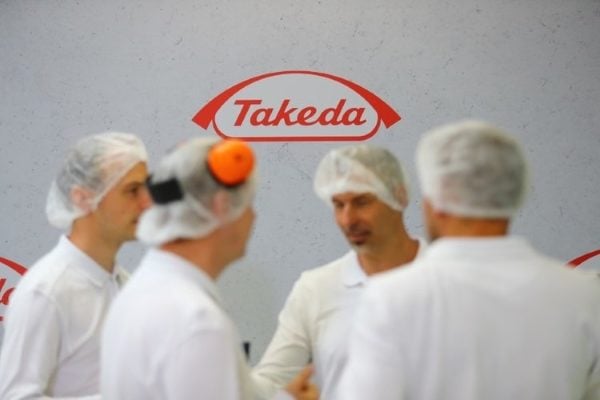With the USD 62 billion deal from Japan’s Takeda Pharmaceutical to buy Irish firm Shire finally agreed after months of wrangling, we asked PharmaBoardroom’s readers whether this deal would herald a flurry of mergers and acquisitions (M&As) within the pharma world.
“Biotech and pharma M&A activity dropped to its lowest level for four years in 2017, with a full 31 percent of last year’s total deriving from a single deal”
The pharmaceutical industry spent USD 2.4 trillion on M&As over the last decade; an average of nine percent of total global M&A activity. However, biotech and pharma M&A activity dropped to its lowest level for four years in 2017, with a full 31 percent of last year’s total deriving from a single deal: Johnson & Johnson’s purchase of Actelion. Despite this slowdown, as Figure 1 (see below) shows, 77 percent of respondents to the PharmaBoardroom M&A survey believe that the Takeda/Shire deal is indicative of a renewal of M&A activity within the industry.

Figure 1: Question 1 of the PharmaBoardroom Pharma M&A Survey (all respondents)
Our readers’ prediction of an increase in M&A activity is shared by several industry insiders, who foresee a bumper crop of deals in the pharma industry in 2018. Many Big Pharma companies are cash rich and need growth to offset the loss of patent protection on their bestselling products, while smaller companies are working to develop innovative new treatments which can improve health outcomes; thereby making them attractive takeover targets.
As Michael Jewell, healthcare partner for sell-side M&A advisory firm Cavendish Corporate Finance, points out “What’s behind this renewed pharma M&A is blockbuster drugs coming off patent, competition from generics, weak new drug pipelines, faltering R&D and Big Pharma companies’ perennial search for the next generation of market-leading medicines.”
Furthermore, President Donald Trump’s tax reforms in the USA – reducing corporation tax from 35 to 25 percent and eliminating the need for US companies to pay corporate taxes on income earned overseas – will provide US pharma companies with a massive windfall to spend on share buybacks, raising dividends and M&A. Frank Aquila, senior corporate lawyer at Sullivan & Cromwell, notes that “the new US tax law puts more cash in buyers’ hands and lower rates make more deals accretive. It’s a powerful combination.”
Another factor spurring on M&A between pharma companies is the fact that other healthcare stakeholders – including payers, insurers and providers – are also consolidating; meaning that scale is more important than ever before.
PharmaBoardroom’s readers have identified this trend and the majority believe that Big Pharma and biotech will be the parts of the pharma value chain most affected by the oncoming M&A bonanza; 42 percent of respondents felt that Big Pharma would be the most affected and 35 percent chose biotech (see Figure 2).

Figure 2: Question 2 of the PharmaBoardroom Pharma M&A Survey (all respondents)
11 percent of our survey respondents predicted the most M&A activity to come from contract manufacturing organizations (CMOs) and contract research organizations (CROs). The CMO/CRO space has been one of the most active for M&A in recent years with major players consolidating to become stronger and increasingly international; the top ten CROs now hold more than half of the entire share of a market that is predicted to grow to USD 59.42 billion by 2020. Mark Griffiths, CEO of Swiss-headquartered contract researcher Carbogen-Amcis, which was acquired by the Indian Dishman Group in 2013, points out that “the acquisition brought synergies to both parties; a shiny, Swiss high-tech business to act as a front end for Dishman, and access to high quality, cost-appropriate, large-scale production capabilities for Carbogen Amcis.”
One potential side-effect of this overall rash of dealmaking is the creation of a valuation bubble. Rob Davis, Merck’s chief financial officer queries, “Given the access to cash that this pool of companies now has, will we see the value of potential targets run up? I do think that’s a risk.” The data provider Dealogic has shown that buyers of healthcare companies in 2018 have agreed to pay premiums of 81 percent on average; considerably more than the 42 percent paid on average in 2017. However, this should not deter companies from engaging in more M&A activity, as Jewell concludes, “the fundamental drivers and commercial necessity for Big Pharma to stay on the acquisition trail should make sure 2018 is a bumper year for pharma M&A.”
Writer: Patrick Burton


